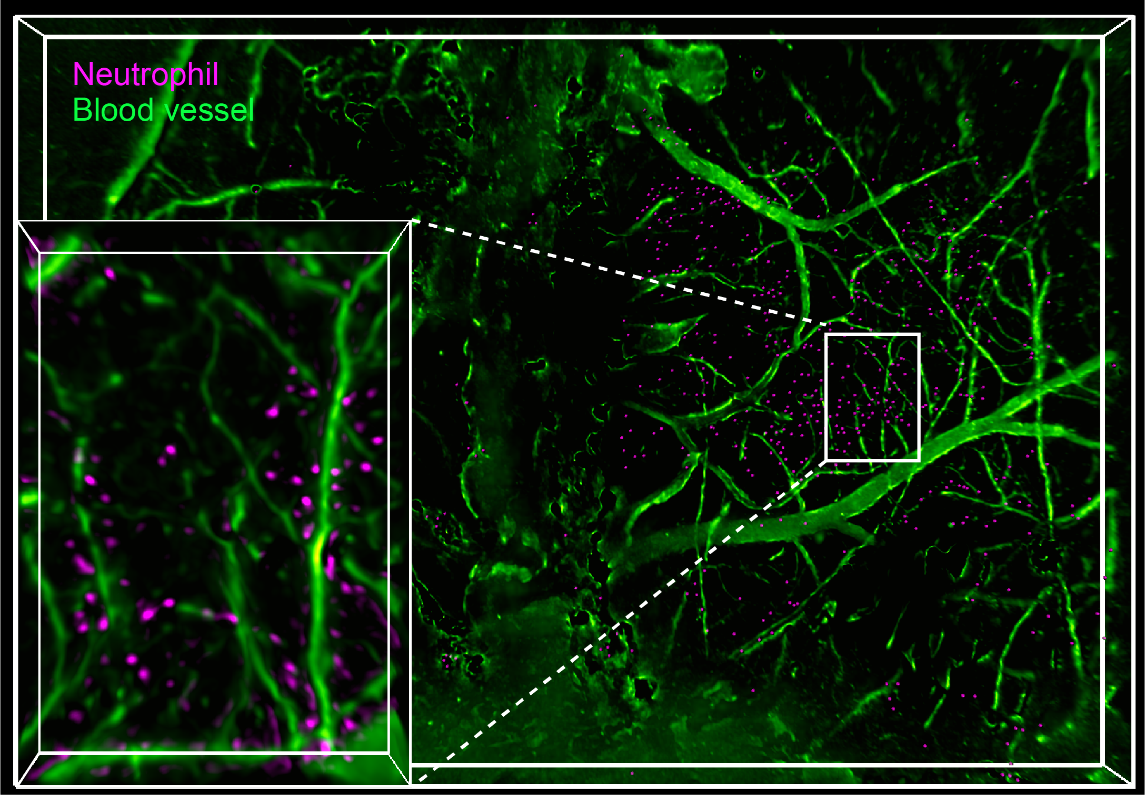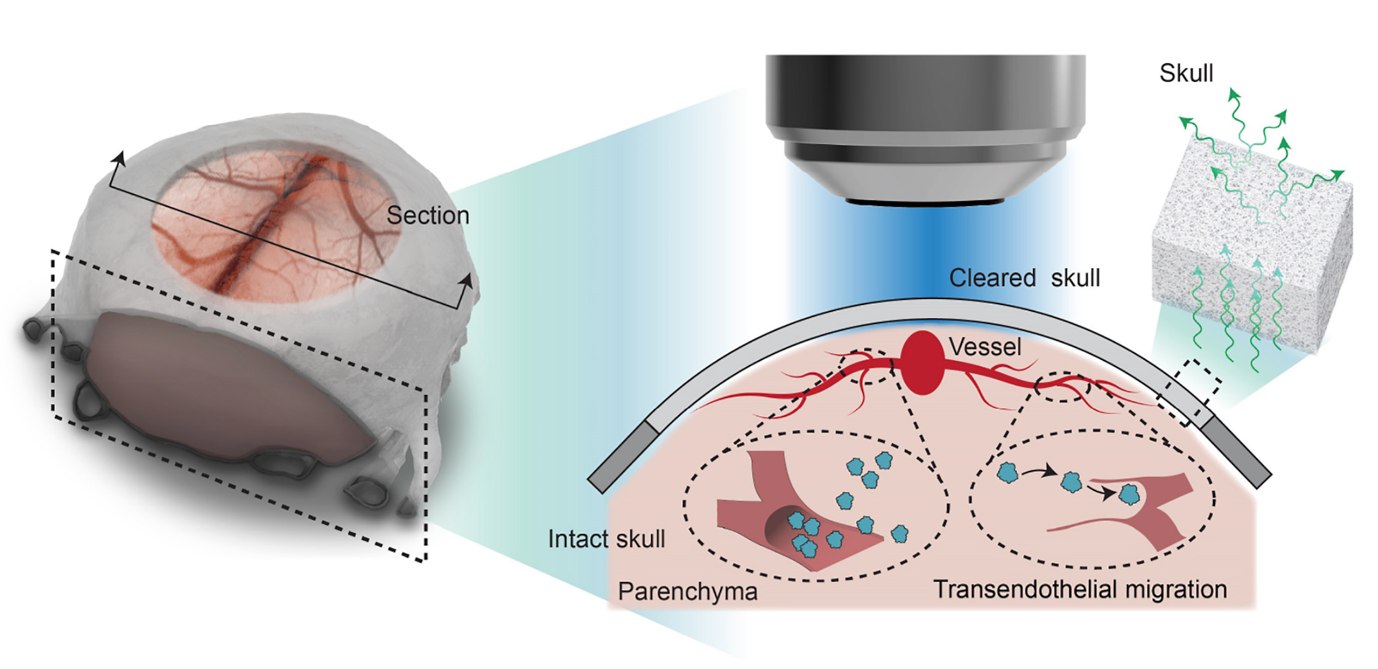An affordable tool uses optics and advanced computing to capture the fine details of tissue change over long periods of time.
The evolution of microscopes during the past 400 years has meant that we can easily see the internal components of cells, such as mitochondria, and watch cells divide in real time.

A new mesoscale microscope system developed at Tsinghua was able to capture in 3D detail an influx of cells, called large-scale meningeal neutrophils (magenta), from the peripheral immune system, in response to acute brain injury in mice models.
But capturing this level of cellular detail in the organs of living animals has been expensive and difficult until now. This limits scientists’ ability to track vital information, ranging from the movements of immune cells to information flow across the brain, say the authors of a new study.
The researchers, led by Qionghai Dai, a professor in Tsinghua University’s Laboratory of Imaging and Intelligent Technology, are reporting the development of a powerful computational-imaging microscope system called RUSH3D.
Using this technology, Dai and his colleagues — including researchers from Fudan University in Shanghai and the Tsinghua-Peking Center for Life Sciences in Beijing — were able to track more than 3,000 individual mouse neurons in three dimensions over several days, with enough time and spatial resolution to show changes both before and after a mouse had moved.
The microscopy system also allowed the team to visualize several complex immune responses, such as tracking tens of thousands of T and B cells over 10 hours to document adaptive changes in mouse lymph nodes.
RUSH3D achieved all this using multiple computational imaging techniques and machine-learning algorithms aimed at improving efficiency. The technology is practical for many labs, Dai says, as it is more affordable than previous hardware alternatives that often involve complex and expensive optical systems.

RUSH3D, a new Tsinghua-developed microscope system, was able to use an algorithm to ‘clean’ distortions created by the skull from images of mouse brains. These images were able to reveal an influx of neutrophils from the peripheral immune systems of mice after acute brain injury without the removal of skull bone, which can further injure the brain.
Solving the puzzle
Until now, there have been a number of barriers to producing microscopes with the capabilities of RUSH3D.
For example, microscopes that seek to observe biological processes at a cellular level within organs must have a very high resolution to capture fine details, a wide field of view to observe a large region of tissue, and rapid imaging speeds to track dynamic processes, Dai explains. But, due to physical imperfections in microscope lenses that are hugely expensive to correct, optical aberrations such as distortion and blurring tend to become more severe as the field of view increases, which limits achievable resolutions.
Microscopes trying to image live animals also need to be non-toxic and relatively non-invasive, as prolonged light exposure can damage or alter cells, which affects the accuracy of results and the possible length of observation.
To create images in three, rather than a flat two dimensions, microscopes need to have a large depth of field and the ability to penetrate tissue and visualize structures buried beneath the surface.
Capturing images in three dimensions is the key. “A two-dimensional image might show a slice of the tissue where only the surface details of neurons are visible,” Dai explains. “But neurons are three-dimensional structures with branching dendrites that extend in all directions. Using RUSH3D’s imaging techniques, you can capture the full depth of the tissue, revealing the intricate network of connections between neurons, their synapses, and their spatial orientation.”
Watching life happen
To address these needs, RUSH3D features two main technologies: scanning light-field imaging and wave-optics digital adaptive optics.
Scanning light-field imaging uses an array of microlenses with high-speed drifting to capture light in a way that allows computers to reconstruct high-resolution 3D visualizations.
Wave-optics digital adaptive optics enhances image quality by measuring the distortions in waves of light caused by imperfections in optical components and using algorithms to adaptively correct them.
Autofocus innovations and background cancelling technology also helped produce clear imagery, says Dai.
But most exciting of all will be the findings that will come once this microscopy technique is in wider use, says Dai, who hopes to use it to study brain-wide neuronal activities or immune responses in mice.
“RUSH3D paves the way for significant advancements in studying complex cellular interactions in live tissues,” he concludes.

Qionghai Dai is a professor in Tsinghua’s Laboratory of Imaging and Intelligent Technology.
Reference
Zhang, Y., Wang, M., Zhu, Q., Guo, Y., Liu, B. et al. Long-term mesoscale imaging of 3D intercellular dynamics across a mammalian organ. Cell (2024). Advanced online publication 13 September 2024. doi: 10.1016/j.cell.2024.08.026
Editor: Guo Lili